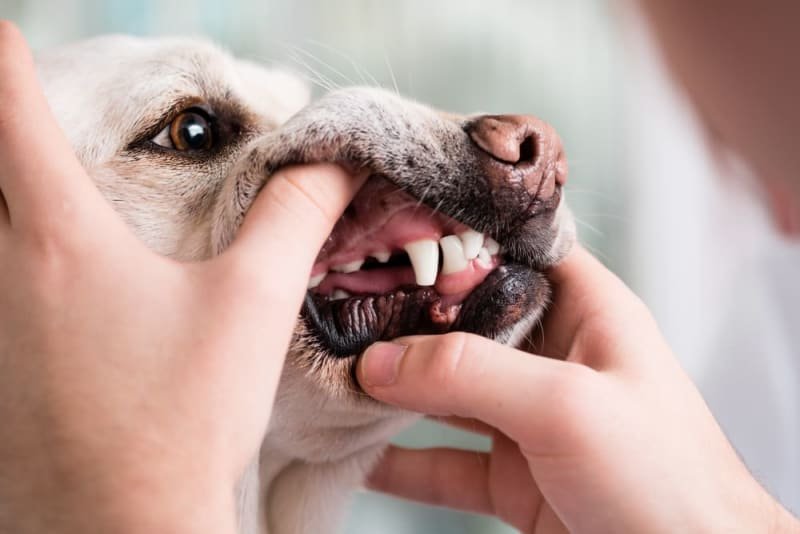When it comes to caring for our dogs, most of us are quick to think about their food, exercise, and vaccinations. But there’s one important aspect of pet health that often gets overlooked — their teeth.
Just like people, dogs can suffer from dental issues such as plaque buildup, gum disease, and even tooth loss. Poor dental health can also lead to more serious health problems, including infections that affect the heart, liver, and kidneys.
The good news? With just a little bit of regular care and the right approach, you can keep your dog’s mouth clean, their breath fresh, and their overall health in check.
Here’s how to make doggy dental care a simple, effective part of your routine.
Why Dental Care Matters
It’s easy to underestimate how much dental health affects your dog’s well-being. But by the age of 3, most dogs show some signs of periodontal disease — a condition that starts with plaque and tartar buildup and can eventually lead to pain, tooth loss, and systemic infections.
Signs of dental issues in dogs include:
- Bad breath (that “dog breath” isn’t always normal)
- Red, swollen, or bleeding gums
- Excessive drooling
- Pawing at the mouth or difficulty eating
- Yellow or brown buildup on teeth
- Loose or missing teeth
Unfortunately, many dogs suffer silently. They won’t always show pain in obvious ways, which makes regular dental care and check-ups even more essential.
Brushing: The Gold Standard
Yes — brushing your dog’s teeth is the best thing you can do to prevent dental disease. Ideally, brushing should be done daily, but even a few times a week can make a difference.
Here’s how to get started:
- Pick the right tools: Use a toothbrush designed for dogs or a soft-bristled human toothbrush. Choose a dog-safe toothpaste — human toothpaste contains xylitol, which is toxic to pets.
- Start slow: Let your dog sniff and taste the toothpaste first. Begin by gently rubbing their teeth and gums with your finger or a soft cloth before introducing the brush.
- Use positive reinforcement: Offer praise, treats, or playtime afterward so your dog begins to associate brushing with a good experience.
It might take a little time and patience, especially if you’re starting later in their life, but many dogs learn to tolerate (and even enjoy) brushing once it becomes part of the routine.
Dental Chews and Treats
While they’re not a substitute for brushing, dental chews can help reduce plaque and tartar by encouraging chewing and stimulating saliva. Look for chews approved by the Veterinary Oral Health Council (VOHC), which meet standards for effectiveness.
Avoid overly hard treats like antlers or hooves — these can crack teeth, especially in older dogs. Stick with chews designed to be both safe and effective for dental hygiene.
Toys That Support Dental Health
Chew toys aren’t just great for keeping your dog entertained — they can also help clean their teeth naturally. Rubber toys with ridges or grooves can gently scrape away plaque as your dog chews.
Rotate different textures to keep your dog interested and avoid over-wearing any particular toy. Always supervise your dog during chew sessions to make sure nothing breaks off or becomes a choking hazard.
Water Additives and Dental Sprays
For pet parents who struggle with brushing, water additives and dental sprays can offer a helpful supplement to a dental routine. These products can freshen breath and reduce bacteria in the mouth. Just add them to your dog’s water or spray directly onto the gums as directed.
Keep in mind: while convenient, they aren’t a replacement for brushing, but they can be part of a multi-pronged approach to oral health.
Professional Dental Cleanings
Even with at-home care, most dogs will eventually need a professional cleaning. These are performed under anesthesia and allow your veterinarian to do a deep clean below the gum line, where bacteria and tartar like to hide.
Your vet can also check for signs of infection, loose or damaged teeth, and other hidden issues. Most dogs benefit from professional cleanings once a year — but your vet will recommend a schedule based on your dog’s breed, age, and dental health.
Start Young, But It’s Never Too Late
If you’ve got a puppy, now is the perfect time to get them used to dental care. Early exposure makes brushing and dental checkups just another part of life.
But even if your dog is older and has never had their teeth brushed, don’t worry. You can still make improvements. Start slow, be gentle, and talk to your vet about what’s best for your individual dog.
Final Thoughts
Dental care might not seem like the most exciting part of pet ownership, but it’s one of the most important. By taking small steps consistently, you can prevent painful problems, save money on expensive treatments down the road, and — most importantly — help your dog live a longer, happier life.
A healthy mouth equals a healthier dog. And that’s something to smile about.

